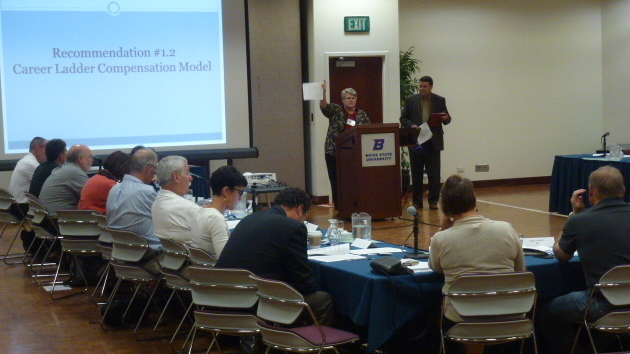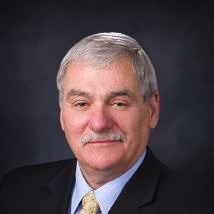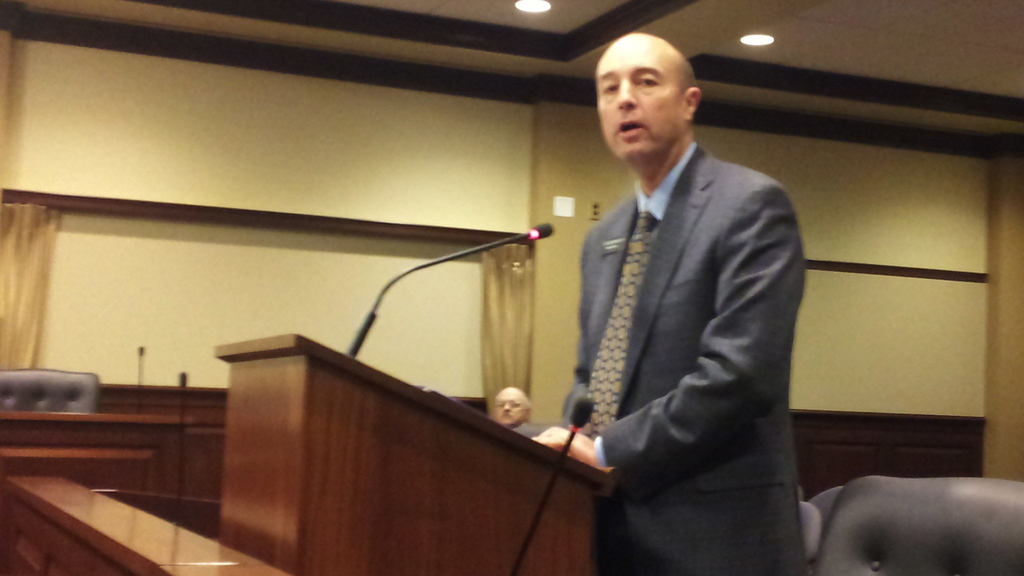
Gov. Butch Otter’s education task force brought together old political adversaries, and their work culminated in a new-found consensus.
The 31 group members — including education leaders, elected officials and the business committee — agreed almost unanimously on 20 far-reaching proposals that will cost at least $350 million. Since Aug. 23, when the group wrapped up its final meeting, task force members have agreed on one more point. They want to see all 20 recommendations enacted.
With the Legislature set to convene on Jan. 6, it looks like the rollout will be incremental at best.

First, there’s the matter of funding — and the question of whether the Legislature can find the $70 million or so needed to make a down payment on the overhaul. “That’s my concern,” said Senate Education Committee Chairman John Goedde, a task force member. “Do we pick and choose?”
Some legislation is already in the works; legislative Democrats have drafted four bills based on several task force recommendations, and Republican Superintendent of Public Instruction Tom Luna supports them. But converting the task force’s broad concepts into legislation is a big job, and it’s not going to get done in one session. “There’s so much that needs to be figured out before they can be implemented,” said Penni Cyr, president of the Idaho Education Association, and a task force member.
Let’s preview the prospects for several of the task force’s big recommendations.
Operational funding
In the days before the Great Recession, school districts received $25,696 per classroom in “discretionary” funding. But the funding has dwindled, and with that, the terminology has changed as well.
In 2011-12, this funding bottomed out at $19,626, rebounding to $20,000 for this year. Now, school administrators prefer to call this “operational” funding, reflecting the fact that the money can be used to offset the rising costs of employee health benefits, transportation or utilities. “Without restoration of these funds, many (districts) will face future years with no options other than cutting the school year (again), reducing staff, or asking taxpayers for (another) tax increase to maintain operations,” says the task force.
The task force recommends restoring $16.5 million in operational funding, a first step in reversing $82.5 million in cuts. School administrators have made this a top legislative priority, and they appear to have support from Otter and key legislators. Luna’s budget proposal includes this $16.5 million.
It would appear this proposal has strong support behind it, but the budget blueprint Otter presents on Jan. 6 will be telling. Otter has said he wants to keep the state budget to an overall increase of 3 to 3.5 percent, in contrast to Luna’s budget proposal, which calls for a 5.4 percent increase for K-12. But Otter has also indicated that restoring operational funding is his top K-12 priority.
What will his budget say?
Teacher salaries
The task force’s most costly recommendation would boost starting teaching salaries to $40,000 and increase salaries for more experienced teachers to $51,000 to $58,000. This plan could cost $200 million to $250 million to implement, according to the task force’s estimates — so the group suggests a first-year installment of about $40 million.
Luna’s budget proposal recommends $42.5 million for the salary ladder. He has assembled a committee to come up with the tiered teacher licensure plan that would be central to the salary ladder, but its rule-making work won’t be done in time for the 2014 session.
Goedde and House Education Committee Chairman Reed DeMordaunt both doubt that a career ladder can be pieced together in one legislative session. “I think it’s going to take more time,” said DeMordaunt, a task force member. “I’d love it to be ready. (But) I’d be shocked.”
In theory, putting the career ladder on hold could free up money for other educational priorities. At least one school superintendent, Idaho Falls’ George Boland, says he’d rather see the money put into the operational funding kitty.

Cyr would like to see more money put into the overall teacher salary pool, regardless of what happens with a career ladder. “The economy has really hurt the teaching base.”
If the career ladder is put on hold, there won’t be a shortage of suggestions on where to move the money.
School technology
The task force spoke in very general terms and parsed its words carefully. The group advocates broadband and WiFi in all classrooms, and recommends that “every educator and student have adequate access to technology devices with appropriate content to support equal access and opportunity.” But the task force was silent on what kind of devices the state should buy, and did not come up with cost estimate.
Luna’s budget request does not include any new money for technology; it simply rolls figures from the 2013-14 budget and continues Idaho’s controversial high school WiFi contract. Will lawmakers, smarting from the 2012 vote on Proposition 3, see this as a way to avoid another election-year battle over classroom technology?
The shift to mastery
The task force supports a fundamental shift in the way students move through the grades — a shift to subject mastery, as opposed to seat time.
With that comes a recommendation to shift the school funding formula. Schools now receive funding based on average daily attendance; the task force wants the state to base funding on enrollment, in order to encourage schools to come up with more individualized learning plans that better serve students.

But enrollment numbers tend to run higher than attendance numbers — and a shift to enrollment-based funding means some districts will gain some funding while other districts lose some funding. Putting more money into the funding formula, cushioning this shock, would carry a cost of $60 million.
While Luna’s 2014-15 budget request was built around the task force’s recommendations, it makes no changes in the funding formula. It assumes continued funding based on ADA — the very system he and his 30 task force colleagues want to see mothballed.
DeMordaunt says the state may have to put more money into the funding formula — but before that happens, he wants the state to focus on coming up with a solid framework for a mastery system. He doesn’t expect this to be done overnight, but he remains excited by the possibilities. “That’s going to be transformative in nature.”
